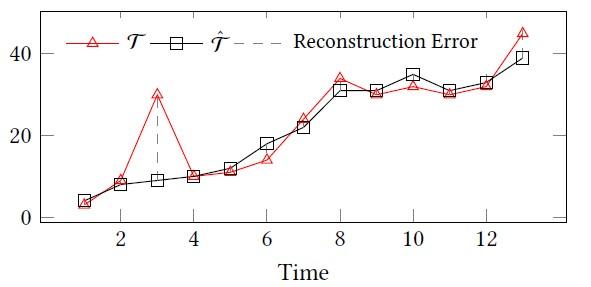博文推荐|Pulsar 客户端编码最佳实践
本文描述了一些 Pulsar 客户端编码相关的最佳实践,并提供了可商用的样例代码,供大家研发的时候参考,提升大家接入 Pulsar 的效率。在生产环境上,Pulsar 的地址信息往往都通过配置中心或者是 K8s 域名发现的方式获得,这块不是这篇文章描述的重点,以PulsarConstant.SERVICE_HTTP_URL代替。本文中的例子均已上传到 Github[1]。
前期 Client 初始化和配置
初始化 Client--demo 级别
import lombok.extern.slf4j.Slf4j;import org.apache.pulsar.client.api.PulsarClient;/*** @author hezhangjian*/@Slf4jpublic class DemoPulsarClientInit {private static final DemoPulsarClientInit INSTANCE = new DemoPulsarClientInit();private PulsarClient pulsarClient;public static DemoPulsarClientInit getInstance() {return INSTANCE;}public void init() throws Exception {pulsarClient = PulsarClient.builder().serviceUrl(PulsarConstant.SERVICE_HTTP_URL).build();}public PulsarClient getPulsarClient() {return pulsarClient;}}
Demo 级别的 Pulsar client 初始化的时候没有配置任何自定义参数,并且初始化的时候没有考虑异常,init的时候会直接抛出异常。
初始化 Client--可上线级别
import io.netty.util.concurrent.DefaultThreadFactory;import lombok.extern.slf4j.Slf4j;import org.apache.pulsar.client.api.PulsarClient;import java.util.concurrent.Executors;import java.util.concurrent.ScheduledExecutorService;import java.util.concurrent.TimeUnit;/*** @author hezhangjian*/@Slf4jpublic class DemoPulsarClientInitRetry {private static final DemoPulsarClientInitRetry INSTANCE = new DemoPulsarClientInitRetry();private volatile PulsarClient pulsarClient;private final ScheduledExecutorService executorService = Executors.newScheduledThreadPool(1, new DefaultThreadFactory("pulsar-cli-init"));public static DemoPulsarClientInitRetry getInstance() {return INSTANCE;}public void init() {executorService.scheduleWithFixedDelay(this::initWithRetry, 0, 10, TimeUnit.SECONDS);}private void initWithRetry() {try {pulsarClient = PulsarClient.builder().serviceUrl(PulsarConstant.SERVICE_HTTP_URL).build();log.info("pulsar client init success");this.executorService.shutdown();} catch (Exception e) {log.error("init pulsar error, exception is ", e);}}public PulsarClient getPulsarClient() {return pulsarClient;}}
在实际的环境中,我们往往要做到pulsar client初始化失败后不影响微服务的启动,即待微服务启动后,再一直重试创建pulsar client。
上面的代码示例通过volatile加不断循环重建实现了这一目标,并且在客户端成功创建后,销毁了定时器线程。
初始化 Client--商用级别
import io.netty.util.concurrent.DefaultThreadFactory;import lombok.extern.slf4j.Slf4j;import org.apache.pulsar.client.api.PulsarClient;import org.apache.pulsar.client.api.SizeUnit;import java.util.concurrent.Executors;import java.util.concurrent.ScheduledExecutorService;import java.util.concurrent.TimeUnit;/*** @author hezhangjian*/@Slf4jpublic class DemoPulsarClientInitUltimate {private static final DemoPulsarClientInitUltimate INSTANCE = new DemoPulsarClientInitUltimate();private volatile PulsarClient pulsarClient;private final ScheduledExecutorService executorService = Executors.newScheduledThreadPool(1, new DefaultThreadFactory("pulsar-cli-init"));public static DemoPulsarClientInitUltimate getInstance() {return INSTANCE;}public void init() {executorService.scheduleWithFixedDelay(this::initWithRetry, 0, 10, TimeUnit.SECONDS);}private void initWithRetry() {try {pulsarClient = PulsarClient.builder().serviceUrl(PulsarConstant.SERVICE_HTTP_URL).ioThreads(4).listenerThreads(10).memoryLimit(64, SizeUnit.MEGA_BYTES).operationTimeout(5, TimeUnit.SECONDS).connectionTimeout(15, TimeUnit.SECONDS).build();log.info("pulsar client init success");this.executorService.shutdown();} catch (Exception e) {log.error("init pulsar error, exception is ", e);}}public PulsarClient getPulsarClient() {return pulsarClient;}}
商用级别的Pulsar Client新增了 5 个配置参数:
•ioThreads netty 的 ioThreads 负责网络 IO 操作,如果业务流量较大,可以调高ioThreads个数;•listenersThreads 负责调用以listener模式启动的消费者的回调函数,建议配置大于该 client 负责的partition数目;•memoryLimit 当前用于限制pulsar生产者可用的最大内存,可以很好地防止网络中断、Pulsar 故障等场景下,消息积压在producer侧,导致 Java 程序 OOM;•operationTimeout 一些元数据操作的超时时间,Pulsar 默认为 30s,有些保守,可以根据自己的网络情况、处理性能来适当调低;•connectionTimeout 连接 Pulsar 的超时时间,配置原则同上。
客户端进阶参数(内存分配相关)
我们还可以通过传递 Java 的 property 来控制 Pulsar 客户端内存分配的参数,这里列举几个重要参数:
•pulsar.allocator.pooled 为 true 则使用堆外内存池,false 则使用堆内存分配,不走内存池。默认使用高效的堆外内存池;•pulsar.allocator.exit_on_oom 如果内存溢出,是否关闭 jvm,默认为 false;•pulsar.allocator.out_of_memory_policy 在 https://github.com/apache/pulsar/pull/12200 引入,目前还没有正式 release 版本,用于配置当堆外内存不够使用时的行为,可选项为FallbackToHeap和ThrowException,默认为FallbackToHeap,如果你不希望消息序列化的内存影响到堆内存分配,则可以配置成ThrowException。
生产者
初始化 producer 重要参数
maxPendingMessages
生产者消息发送队列,根据实际 topic 的量级合理配置,避免在网络中断、Pulsar 故障场景下的 OOM。建议和 client 侧的配置memoryLimit之间挑一个进行配置。
messageRoutingMode
消息路由模式。默认为RoundRobinPartition。根据业务需求选择,如果需要保序,一般选择SinglePartition,把相同 key 的消息发到同一个partition。
autoUpdatePartition
自动更新 partition 信息。如topic中partition信息不变则不需要配置,降低集群的消耗。
batch 相关参数
因为批量发送模式底层由定时任务实现,如果该 topic 上消息数较小,则不建议开启batch。尤其是大量的低时间间隔的定时任务会导致 netty 线程 CPU 飙高。
•enableBatching 是否启用批量发送;•batchingMaxMessages 批量发送最大消息条数;•batchingMaxPublishDelay 批量发送定时任务间隔。
静态 producer 初始化
静态 producer,指不会随着业务的变化进行 producer 的启动或关闭。那么就在微服务启动完成、client 初始化完成之后,初始化 producer,样例如下:
一个生产者一个线程,适用于生产者数目较少的场景
import io.netty.util.concurrent.DefaultThreadFactory;import lombok.extern.slf4j.Slf4j;import org.apache.pulsar.client.api.Producer;import java.util.concurrent.Executors;import java.util.concurrent.ScheduledExecutorService;import java.util.concurrent.TimeUnit;/*** @author hezhangjian*/@Slf4jpublic class DemoPulsarStaticProducerInit {private final ScheduledExecutorService executorService = Executors.newScheduledThreadPool(1, new DefaultThreadFactory("pulsar-producer-init"));private final String topic;private volatile Producer<byte[]> producer;public DemoPulsarStaticProducerInit(String topic) {this.topic = topic;}public void init() {executorService.scheduleWithFixedDelay(this::initWithRetry, 0, 10, TimeUnit.SECONDS);}private void initWithRetry() {try {final DemoPulsarClientInit instance = DemoPulsarClientInit.getInstance();producer = instance.getPulsarClient().newProducer().topic(topic).create();} catch (Exception e) {log.error("init pulsar producer error, exception is ", e);}}public Producer<byte[]> getProducer() {return producer;}}
多个生产者一个线程,适用于生产者数目较多的场景
import io.netty.util.concurrent.DefaultThreadFactory;import lombok.extern.slf4j.Slf4j;import org.apache.pulsar.client.api.Producer;import java.util.List;import java.util.concurrent.CopyOnWriteArrayList;import java.util.concurrent.Executors;import java.util.concurrent.ScheduledExecutorService;import java.util.concurrent.TimeUnit;/*** @author hezhangjian*/@Slf4jpublic class DemoPulsarStaticProducersInit {private final ScheduledExecutorService executorService = Executors.newScheduledThreadPool(1, new DefaultThreadFactory("pulsar-consumer-init"));private CopyOnWriteArrayList<Producer<byte[]>> producers;private int initIndex;private List<String> topics;public DemoPulsarStaticProducersInit(List<String> topics) {this.topics = topics;}public void init() {executorService.scheduleWithFixedDelay(this::initWithRetry, 0, 10, TimeUnit.SECONDS);}private void initWithRetry() {if (initIndex == topics.size()) {return;}for (; initIndex < topics.size(); initIndex++) {try {final DemoPulsarClientInit instance = DemoPulsarClientInit.getInstance();final Producer<byte[]> producer = instance.getPulsarClient().newProducer().topic(topics.get(initIndex)).create();;producers.add(producer);} catch (Exception e) {log.error("init pulsar producer error, exception is ", e);break;}}}public CopyOnWriteArrayList<Producer<byte[]>> getProducers() {return producers;}}
动态生成销毁的 producer 示例
还有一些业务,我们的 producer 可能会根据业务来进行动态的启动或销毁,如接收道路上车辆的数据并发送给指定的 topic。我们不会让内存里面驻留所有的 producer,这会导致占用大量的内存,我们可以采用类似于 LRU Cache 的方式来管理 producer 的生命周期。
/*** @author hezhangjian*/@Slf4jpublic class DemoPulsarDynamicProducerInit {/*** topic -- producer*/private AsyncLoadingCache<String, Producer<byte[]>> producerCache;public DemoPulsarDynamicProducerInit() {this.producerCache = Caffeine.newBuilder().expireAfterAccess(600, TimeUnit.SECONDS).maximumSize(3000).removalListener((RemovalListener<String, Producer<byte[]>>) (topic, value, cause) -> {log.info("topic {} cache removed, because of {}", topic, cause);try {value.close();} catch (Exception e) {log.error("close failed, ", e);}}).buildAsync(new AsyncCacheLoader<>() {@Overridepublic CompletableFuture<Producer<byte[]>> asyncLoad(String topic, Executor executor) {return acquireFuture(topic);}@Overridepublic CompletableFuture<Producer<byte[]>> asyncReload(String topic, Producer<byte[]> oldValue,Executor executor) {return acquireFuture(topic);}});}private CompletableFuture<Producer<byte[]>> acquireFuture(String topic) {CompletableFuture<Producer<byte[]>> future = new CompletableFuture<>();try {ProducerBuilder<byte[]> builder = DemoPulsarClientInit.getInstance().getPulsarClient().newProducer().enableBatching(true);final Producer<byte[]> producer = builder.topic(topic).create();future.complete(producer);} catch (Exception e) {log.error("create producer exception ", e);future.completeExceptionally(e);}return future;}}
这个模式下,可以根据返回的CompletableFuture<Producer<byte[]>>来优雅地进行流式处理。
可以接受消息丢失的发送
final CompletableFuture<Producer<byte[]>> cacheFuture = producerCache.get(topic);cacheFuture.whenComplete((producer, e) -> {if (e != null) {log.error("create pulsar client exception ", e);return;}try {producer.sendAsync(msg).whenComplete(((messageId, throwable) -> {if (throwable != null) {log.error("send producer msg error ", throwable);return;}log.info("topic {} send success, msg id is {}", topic, messageId);}));} catch (Exception ex) {log.error("send async failed ", ex);}});
以上为正确处理Client创建失败和发送失败的回调函数。但是由于在生产环境下,Pulsar 并不是一直保持可用的,会因为虚拟机故障、Pulsar 服务升级等导致发送失败。这个时候如果要保证消息发送成功,就需要对消息发送进行重试。
可以容忍极端场景下的发送丢失
final Timer timer = new HashedWheelTimer();private void sendMsgWithRetry(String topic, byte[] msg, int retryTimes) {final CompletableFuture<Producer<byte[]>> cacheFuture = producerCache.get(topic);cacheFuture.whenComplete((producer, e) -> {if (e != null) {log.error("create pulsar client exception ", e);return;}try {producer.sendAsync(msg).whenComplete(((messageId, throwable) -> {if (throwable == null) {log.info("topic {} send success, msg id is {}", topic, messageId);return;}if (retryTimes == 0) {timer.newTimeout(timeout -> DemoPulsarDynamicProducerInit.this.sendMsgWithRetry(topic, msg, retryTimes - 1), 1 << retryTimes, TimeUnit.SECONDS);}log.error("send producer msg error ", throwable);}));} catch (Exception ex) {log.error("send async failed ", ex);}});}
这里在发送失败后,做了退避重试,可以容忍pulsar服务端故障一段时间。比如退避 7 次、初次间隔为 1s,那么就可以容忍1+2+4+8+16+32+64=127s的故障。这已经足够满足大部分生产环境的要求了。
因为理论上存在超过 127s 的故障,所以还是要在极端场景下,向上游返回失败。
生产者 Partition 级别严格保序
生产者严格保序的要点:一次只发送一条消息,确认发送成功后再发送下一条消息。实现上可以使用同步异步两种模式:
•同步模式的要点就是循环发送,直到上一条消息发送成功后,再启动下一条消息发送;•异步模式的要点是观测上一条消息发送的 future,如果失败也一直重试,成功则启动下一条消息发送。
值得一提的是,这个模式下,partition 间是可以并行的,可以使用OrderedExecutor或per partition per thread。
同步模式举例:
/*** @author hezhangjian*/@Slf4jpublic class DemoPulsarProducerSyncStrictlyOrdered {Producer<byte[]> producer;public void sendMsg(byte[] msg) {while (true) {try {final MessageId messageId = producer.send(msg);log.info("topic {} send success, msg id is {}", producer.getTopic(), messageId);break;} catch (Exception e) {log.error("exception is ", e);}}}}
消费者
初始化消费者重要参数
receiverQueueSize
注意:处理不过来时,消费缓冲队列会积压在内存中,合理配置防止 OOM。
autoUpdatePartition
自动更新 partition 信息。如topic中partition信息不变则不需要配置,降低集群的消耗。
subscribeType
订阅类型,根据业务需求决定。
subscriptionInitialPosition
订阅开始的位置,根据业务需求决定最前或者最后。
messageListener
使用 listener 模式消费,只需要提供回调函数,不需要主动执行receive()拉取。一般没有特殊诉求,建议采用 listener 模式。
ackTimeout
当服务端推送消息,但消费者未及时回复 ack 时,经过 ackTimeout 后,会重新推送给消费者处理,即redeliver机制。
注意在利用redeliver机制的时候,一定要注意仅仅使用重试机制来重试可恢复的错误。举个例子,如果代码里面对消息进行解码,解码失败就不适合利用redeliver机制。这会导致客户端一直处于重试之中。
如果拿捏不准,还可以通过下面的deadLetterPolicy配置死信队列,防止消息一直重试。
negativeAckRedeliveryDelay
当客户端调用negativeAcknowledge时,触发redeliver机制的时间。redeliver机制的注意点同ackTimeout。
需要注意的是, ackTimeout和negativeAckRedeliveryDelay建议不要同时使用,一般建议使用negativeAck,用户可以有更灵活的控制权。一旦ackTimeout配置的不合理,在消费时间不确定的情况下可能会导致消息不必要的重试。
deadLetterPolicy
配置redeliver的最大次数和死信 topic。
初始化消费者原则
消费者只有创建成功才能工作,不像生产者可以向上游返回失败,所以消费者要一直重试创建。示例代码如下:注意:消费者和 topic 可以是一对多的关系,消费者可以订阅多个 topic。
一个消费者一个线程,适用于消费者数目较少的场景
import io.netty.util.concurrent.DefaultThreadFactory;import lombok.extern.slf4j.Slf4j;import org.apache.pulsar.client.api.Consumer;import java.util.concurrent.Executors;import java.util.concurrent.ScheduledExecutorService;import java.util.concurrent.TimeUnit;/*** @author hezhangjian*/@Slf4jpublic class DemoPulsarConsumerInit {private final ScheduledExecutorService executorService = Executors.newScheduledThreadPool(1, new DefaultThreadFactory("pulsar-consumer-init"));private final String topic;private volatile Consumer<byte[]> consumer;public DemoPulsarConsumerInit(String topic) {this.topic = topic;}public void init() {executorService.scheduleWithFixedDelay(this::initWithRetry, 0, 10, TimeUnit.SECONDS);}private void initWithRetry() {try {final DemoPulsarClientInit instance = DemoPulsarClientInit.getInstance();consumer = instance.getPulsarClient().newConsumer().topic(topic).messageListener(new DemoMessageListener<>()).subscribe();} catch (Exception e) {log.error("init pulsar producer error, exception is ", e);}}public Consumer<byte[]> getConsumer() {return consumer;}}
多个消费者一个线程,适用于消费者数目较多的场景
import io.netty.util.concurrent.DefaultThreadFactory;import lombok.extern.slf4j.Slf4j;import org.apache.pulsar.client.api.Consumer;import java.util.List;import java.util.concurrent.CopyOnWriteArrayList;import java.util.concurrent.Executors;import java.util.concurrent.ScheduledExecutorService;import java.util.concurrent.TimeUnit;/*** @author hezhangjian*/@Slf4jpublic class DemoPulsarConsumersInit {private final ScheduledExecutorService executorService = Executors.newScheduledThreadPool(1, new DefaultThreadFactory("pulsar-consumer-init"));private CopyOnWriteArrayList<Consumer<byte[]>> consumers;private int initIndex;private List<String> topics;public DemoPulsarConsumersInit(List<String> topics) {this.topics = topics;}public void init() {executorService.scheduleWithFixedDelay(this::initWithRetry, 0, 10, TimeUnit.SECONDS);}private void initWithRetry() {if (initIndex == topics.size()) {return;}for (; initIndex < topics.size(); initIndex++) {try {final DemoPulsarClientInit instance = DemoPulsarClientInit.getInstance();final Consumer<byte[]> consumer = instance.getPulsarClient().newConsumer().topic(topics.get(initIndex)).messageListener(new DemoMessageListener<>()).subscribe();consumers.add(consumer);} catch (Exception e) {log.error("init pulsar producer error, exception is ", e);break;}}}public CopyOnWriteArrayList<Consumer<byte[]>> getConsumers() {return consumers;}}
消费者达到至少一次语义
使用手动回复 ack 模式,确保处理成功后再 ack。如果处理失败可以自己重试或通过negativeAck机制进行重试
同步模式举例
这里需要注意,如果处理消息时长差距比较大,同步处理的方式可能会让本来可以很快处理的消息得不到处理的机会。
/*** @author hezhangjian*/@Slf4jpublic class DemoMessageListenerSyncAtLeastOnce<T> implements MessageListener<T> {@Overridepublic void received(Consumer<T> consumer, Message<T> msg) {try {final boolean result = syncPayload(msg.getData());if (result) {consumer.acknowledgeAsync(msg);} else {consumer.negativeAcknowledge(msg);}} catch (Exception e) {// 业务方法可能会抛出异常log.error("exception is ", e);consumer.negativeAcknowledge(msg);}}/*** 模拟同步执行的业务方法* @param msg 消息体内容* @return*/private boolean syncPayload(byte[] msg) {return System.currentTimeMillis() % 2 == 0;}}
异步模式举例
异步的话需要考虑内存的限制,因为异步的方式可以很快地从broker消费,不会被业务操作阻塞,这样 inflight 的消息可能会非常多。如果是Shared或KeyShared模式,可以通过maxUnAckedMessage进行限制。如果是Failover模式,可以通过下面的消费者繁忙时阻塞拉取消息,不再进行业务处理通过判断 inflight 消息数来阻塞处理。
/*** @author hezhangjian*/@Slf4jpublic class DemoMessageListenerAsyncAtLeastOnce<T> implements MessageListener<T> {@Overridepublic void received(Consumer<T> consumer, Message<T> msg) {try {asyncPayload(msg.getData(), new DemoSendCallback() {@Overridepublic void callback(Exception e) {if (e == null) {consumer.acknowledgeAsync(msg);} else {log.error("exception is ", e);consumer.negativeAcknowledge(msg);}}});} catch (Exception e) {// 业务方法可能会抛出异常consumer.negativeAcknowledge(msg);}}/*** 模拟异步执行的业务方法* @param msg 消息体* @param demoSendCallback 异步函数的callback*/private void asyncPayload(byte[] msg, DemoSendCallback demoSendCallback) {if (System.currentTimeMillis() % 2 == 0) {demoSendCallback.callback(null);} else {demoSendCallback.callback(new Exception("exception"));}}}
消费者繁忙时阻塞拉取消息,不再进行业务处理
当消费者处理不过来时,通过阻塞listener方法,不再进行业务处理。避免在微服务积累太多消息导致 OOM,可以通过 RateLimiter 或者 Semaphore 控制处理。
*** @author hezhangjian*/@Slf4jpublic class DemoMessageListenerBlockListener<T> implements MessageListener<T> {/*** Semaphore保证最多同时处理500条消息*/private final Semaphore semaphore = new Semaphore(500);@Overridepublic void received(Consumer<T> consumer, Message<T> msg) {try {semaphore.acquire();asyncPayload(msg.getData(), new DemoSendCallback() {@Overridepublic void callback(Exception e) {semaphore.release();if (e == null) {consumer.acknowledgeAsync(msg);} else {log.error("exception is ", e);consumer.negativeAcknowledge(msg);}}});} catch (Exception e) {semaphore.release();// 业务方法可能会抛出异常consumer.negativeAcknowledge(msg);}}/*** 模拟异步执行的业务方法* @param msg 消息体* @param demoSendCallback 异步函数的callback*/private void asyncPayload(byte[] msg, DemoSendCallback demoSendCallback) {if (System.currentTimeMillis() % 2 == 0) {demoSendCallback.callback(null);} else {demoSendCallback.callback(new Exception("exception"));}}}
消费者严格按 partition 保序
为了实现partition级别消费者的严格保序,需要对单partition的消息,一旦处理失败,在这条消息重试成功之前不能处理该partition的其他消息。示例如下:
/*** @author hezhangjian*/@Slf4jpublic class DemoMessageListenerSyncAtLeastOnceStrictlyOrdered<T> implements MessageListener<T> {@Overridepublic void received(Consumer<T> consumer, Message<T> msg) {retryUntilSuccess(msg.getData());consumer.acknowledgeAsync(msg);}private void retryUntilSuccess(byte[] msg) {while (true) {try {final boolean result = syncPayload(msg);if (result) {break;}} catch (Exception e) {log.error("exception is ", e);}}}/*** 模拟同步执行的业务方法** @param msg 消息体内容* @return*/private boolean syncPayload(byte[] msg) {return System.currentTimeMillis() % 2 == 0;}}
致谢
感谢鹏辉[2]和罗天[3]的审稿。
作者简介
贺张俭[4],Apache Pulsar Contributor,西安电子科技大学毕业,华为云物联网高级工程师,目前 Pulsar 已经在华为云物联网大规模商用,了解更多内容可以访问他的简书博客地址[5]。
相关链接
关注「Apache Pulsar」👇🏻,获取干货与动态
👇🏻 加入 Apache Pulsar 中文交流群 👇🏻

引用链接
[1] Github: https://github.com/Shoothzj/pulsar-client-examples[2] 鹏辉: https://github.com/codelipenghui[3] 罗天: https://github.com/fu-turer[4] 贺张俭: https://github.com/Shoothzj[5] 简书博客地址: https://www.jianshu.com/u/9e21abacd418
点击「阅读原文」,查看 Apache Pulsar 干货集锦
本文分享自微信公众号 - ApachePulsar(ApachePulsar)。
如有侵权,请联系 support@oschina.cn 删除。
本文参与“OSC源创计划”,欢迎正在阅读的你也加入,一起分享。







